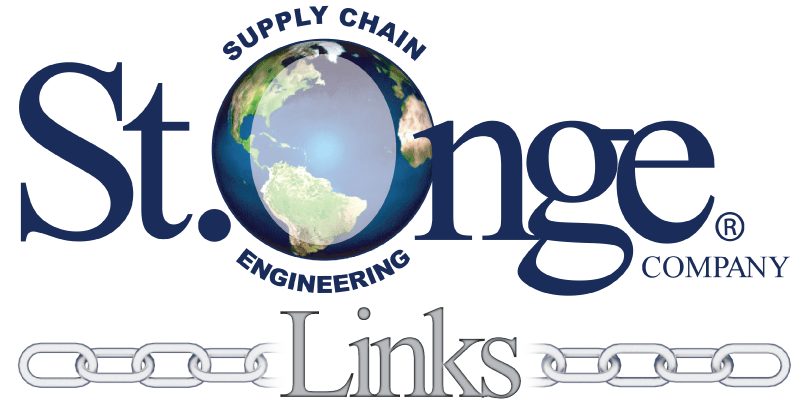
Up-Staffs Down-Staffs – The In’s and Out’s of Servicing Peak Staffing Requirements
In a perfect world, the weather is neither too hot nor too cold, every day is a good hair day, your main course always arrives after you’ve finished your appetizer, and, most miraculously, the facility you’re responsible for staffing never varies in labor requirements by more than one or two headcounts over the course of a year. But I certainly never had the weather cooperate, usually end up with my dinner cooling in front of me before I’ve taken a third bite from my nacho appetizer, and the staffing planning for which I’d been responsible has varied by as much as five times the headcount from its peak to its low point. Of course, not all peak staffing requirements are that severe, but many distribution operations often require some measure of additional staffing for brief periods of time to meet peak throughput demands. While those operations may use temporary staffing to cover their peak demands, there are several approaches to acquiring that additional short-term staffing and several strategies to make the best use of that temporary staffing.
Conquering the Peak
Peak throughput or processing demands are the most difficult to cover effectively. Maintaining permanent staff year-round just to cover those peaks is almost never fiscally prudent. It is possible to address the short-term labor demands these peaks create with either an outside temporary service or through internal temporary staff. The length of time for the peak need would make one alternative desirable over the other.
If the need for temporary staffing covers several months, then internal seasonal hires can be much more beneficial for an operation. For example, consider the holiday season peak demand for a retail distribution operation. This need will probably span several months, enough time to warrant hiring and training a seasonal staff. Despite that longer nature of the short-term need, not all distribution center tasks are the best fit for seasonal help. It is best to leave highly detailed tasks, such as detailed receiving or auditing tasks, to regular seasoned employees. Tasks such as straightforward truck loading, carton induction requiring throwing pre-labeled or easily labeled cartons onto a conveyor system, and similar tasks are better suited for seasonal help as you strive to meet your peak seasonal demands.
The fact that the peak, particularly if it is during a holiday, will grow over time allows for the modest learning curve you should expect with even the most straightforward tasks that the additional staff will face. Rest assured that usually within three weeks of bringing aboard the seasonal help, they will be more productive than on their first day. This accommodates more throughput over time without a linear growth to the number of workers required as the seasonal staff becomes more effective—just what the staffing doctor ordered.
There is one major caution regarding hiring seasonal help. Holiday temporary help often takes the short-term position to earn extra cash for holiday purchases. They often have an earnings amount that they need or want to reach in mind when they take the seasonal position. Often, when they reach that fiscal goal, they resign, and the timing is usually such that they leave just when they’re needed the most, at the apex of the of the seasonal peak demand. This could make the peak staffing solution even more frustrating, unless you take measures to retain the seasonal help through your peak period. Fortunately, achieving this has a few proven approaches.
The first approach is to pay a bonus for all season associates who stay on the job to a certain milestone date. If you recognize that you need the holiday seasonal help through Dec. 20, then paying, say, fifteen dollars per hour for every hour worked as they work them, but paying a bonus equal to five more dollars per hour for every hour worked if the seasonal associate stays through Dec. 20, will aid significantly in associate retention through the entire peak period. The precise amounts per hour will vary based on your unique circumstances, but the bonus approach increases the retention percentages dramatically.
Additionally, many businesses that require peak seasonal coverage year after year will be able to develop a recurring pool of the same seasonal associates. If you do have the same temporary coverage demand year after year, communicate that to the seasonal hires. Make sure they are aware that if they do stay on board until your peak needs are satisfied, they will be the preferred associates for the next year’s seasonal hiring campaign.
Finally, many seasonal hires may indeed be seeking permanent full-time employment. Communicate to them that solid performers who are interested in full-time positions will leap to the top of the pool of interviewees for full-time positions as they become available. This will help keep the seasonal work force intact until you have satisfied the peak seasonal demands since anyone interested in full-time employment would clearly stay on board until a need for them lapses.
These three retention approaches, when peak coverage periods are long enough to warrant them, will go a long way to stabilizing your seasonal work force. Successful seasonal hiring programs often have the same associates coming back year after year, which aids in keeping training costs down for the seasonal work force. They also generate a pool of trained associates who may be keenly interested in permanent employment, aiding in qualifying your pool of potential full-time employees.
Seasonal hiring programs, while a good answer for longer term peaks of two to three months, do not effectively meet the needs created by much shorter peaks. These peaks could be end-of-month or end-of-quarter peaks of the type generated by hard-line manufacturers’ promotional activities as they try to ‘make their numbers’ at the end of a month or quarter. The best method to meet these shorter, sometimes more severe peaks is by utilizing a professional temporary service or temp agency. Qualifying a professional temporary partner is extremely important. Ensure they have trained warehouse workers for the types of tasks you need to staff. Be sure their associates are subject to the requirements you have for your human resources—from loss prevention screening to drug testing requirements as your business requires. Ask for and verify their references. Ask colleagues at other organizations for recommendations of temporary staffing agencies they have successfully used. Identifying more than one temporary staffing partner is an effective approach in ensuring that you have adequate help if demand exceeds the available staff of one single, preferred partner.
Survey Your Peaks
Regardless of the magnitude or duration of the peaks you need to cover, plan for those peaks. Granted, projections are never perfectly accurate, but reviewing the expected volumes requiring coverage in your operation will go a long way to allowing for the development of the best means to address them. Historical peak reviews will provide part of the picture. Working with your marketing or sales group to determine expected volume variances and peak demands will bring more of that picture into focus. As the peak period draws closer, the magnitude of the staff increase required should crystallize. Whether you need to cover those peaks with a seasonal work force you hire directly or through partnering with a professional staffing agency, the more information you can use, and the sooner you can use it to plan (or share with your staffing agency partner), the easier it will be to implement your peak staffing solution. While it is a sure thing that you will never be able to actually control the weather, you can watch the forecast and make sure you don’t get caught without your umbrella.
—Bryan Jensen, St. Onge Company





